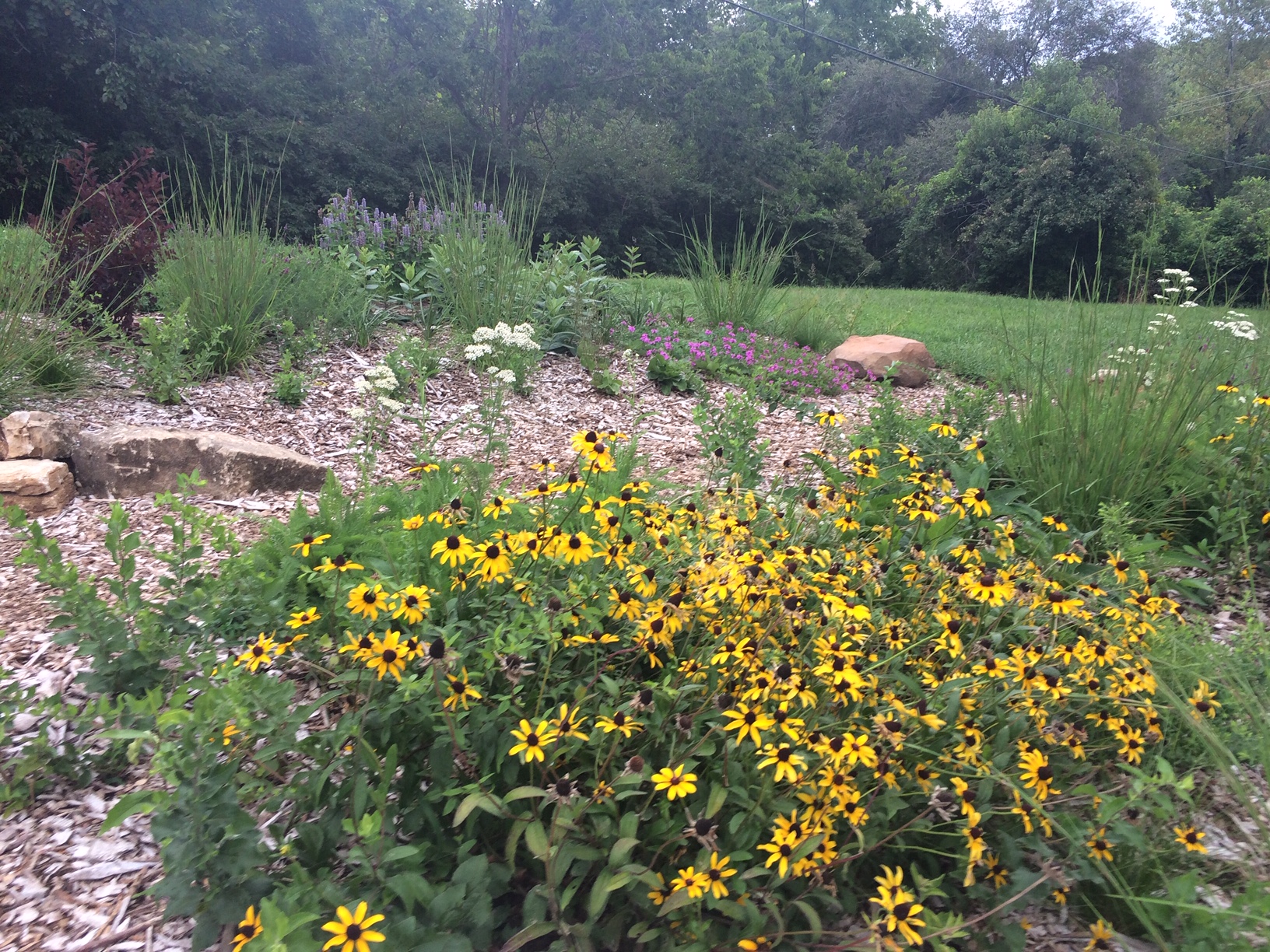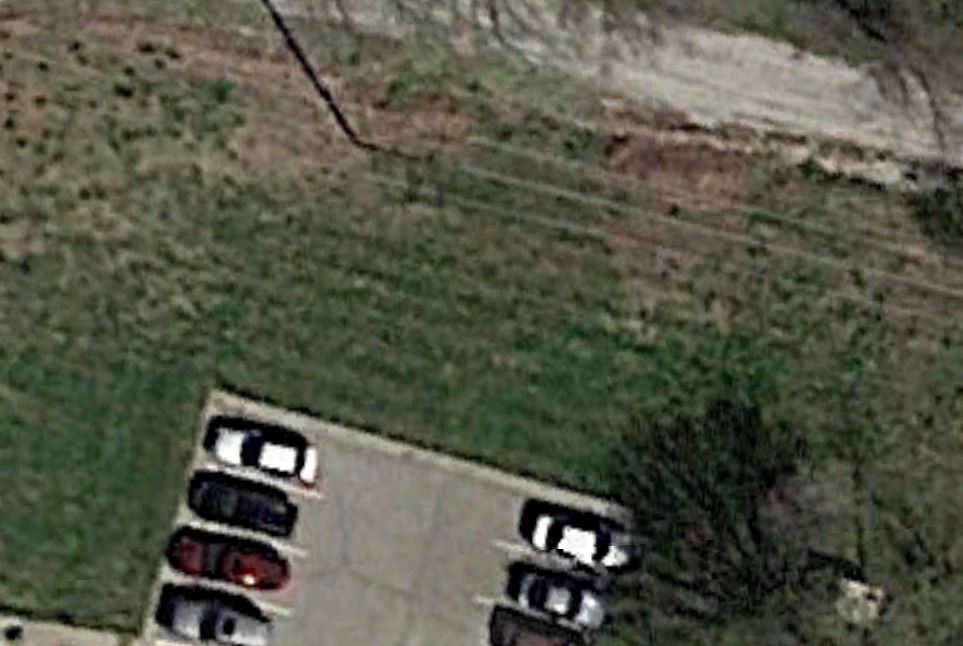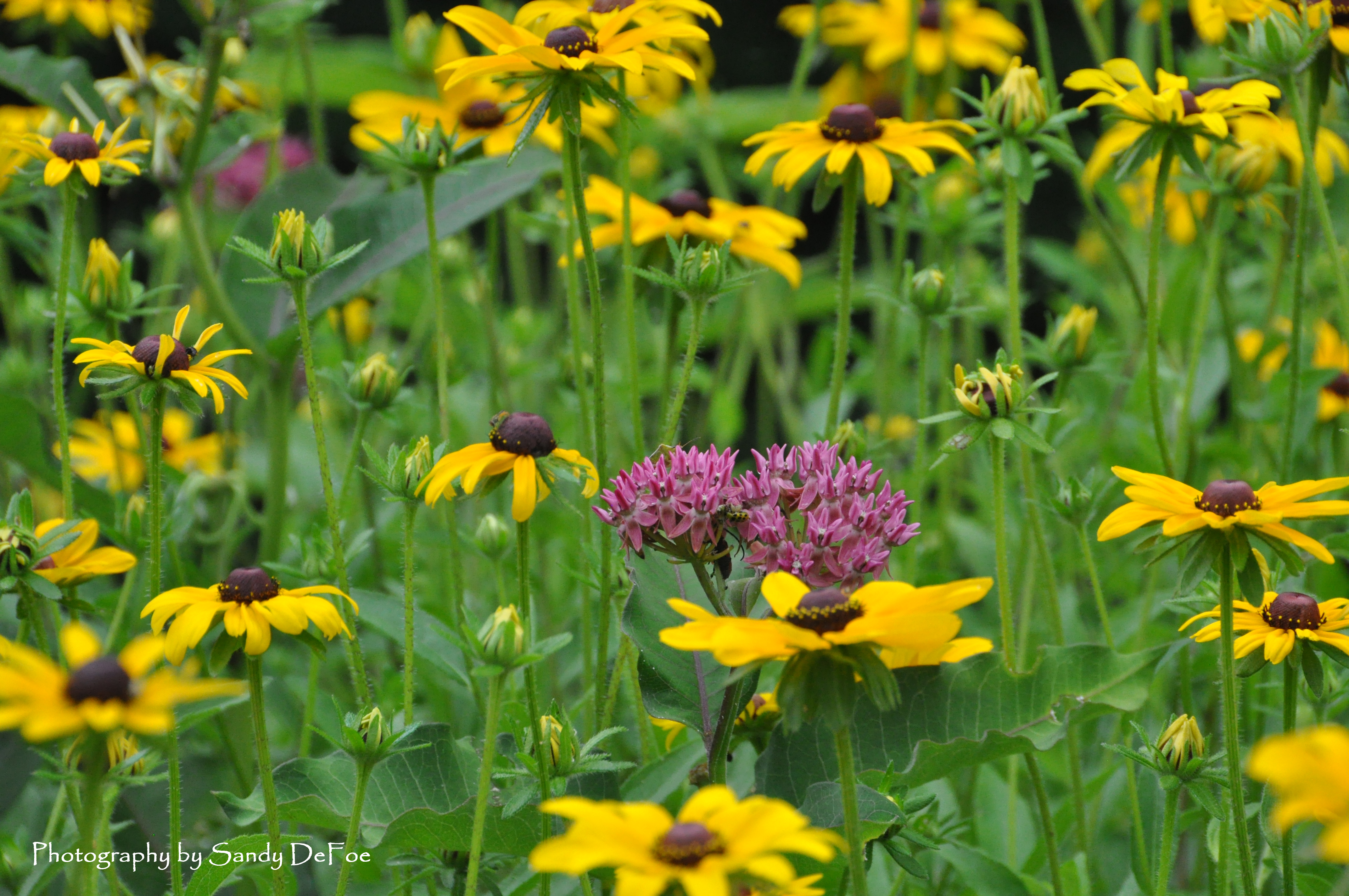One of my favorite things to do this summer is to quietly sit on my deck, watching dozens of butterflies floating through the yard enjoying the nectar buffet I’ve planted. This is the first year that I’ve had a steady stream of visitors and it feels like the time, effort and money I’ve put into the pollinator garden the last few years are finally paying off.
A robust pollinator garden takes time — lots of time — to develop. Dan Nelson, Senior Designer at Embassy Landscape Group, recommends patience. He advises his customers that, depending on the size of the garden and number of plants installed, it can take two to three years from the initial contact for a butterfly garden to reach its full potential. His work at the Parkville Memorial Butterfly Garden is a case in point.
What began as this:
Now looks like this:
The transformation however, didn’t happen overnight. It took almost three years of planning,
preparing,
planting
and patient nurturing by dedicated volunteers
for the Parkville garden to become the showplace it is today.
The process of creating a bustling butterfly garden is a gradual one. It begins by analyzing the intended site. In Parkville’s case, it was an open site with a gradual incline very near to a paved parking lot.
According to Dan, tracking the amount of sunlight a place receives, the type of soil it has, how quickly it drains as well as other environmental characteristics (like heat reflected from pavement) is an important step in the design process. Environmental needs must be carefully considered. Understanding both the positive and negative aspects of a location helps to ensure the success of any type of landscape; the extra time spent in this type of pre-planning can pay off in the long run.
Once a site is analyzed, then the actual design can began to emerge. Dan selects plant varieties that are appropriate for the local conditions and local butterflies, weaving them into viable design options.
Because many of the preferred varieties used in butterfly gardens are native perennials,
they may spend the first season establishing healthy root systems instead of top growth. As a result, the first year it may appear that a garden is struggling to survive. There may only be a scattering of blooms, often not enough to create the waves of strong color that attracts butterflies.
Given time, that will change. The native plants will bloom profusely and will over time begin to draw butterflies, bees and other pollinators that are crucial to a healthy planet.
Although it’s important to highlight the beauty of the plants themselves and to create a peaceful retreat for humans to explore and appreciate,
Dan says that designing for all of the needs of the local winged visitors is what really makes a butterfly garden successful. Just planting massed beds of brightly colored flowers isn’t enough to draw butterflies and keep them returning.
Among other things, they need shelter from.strong winds, a place to rest, warmth when it’s chilly and a safe place to lay their eggs.
Dan thoroughly details what butterflies need to call a place home in the opening slides of a Powerpoint presentation he uses for his customer presentations. It’s such great advice for those wanting to incorporate a butterfly garden in their landscape that I’ve included it below. Feel free to print it off for future reference.
Patience has never been my strong suit. I much prefer instantaneous response and immediate action. Waiting for my garden to mature and for the butterflies to come has been a challenge for me, but it has also been an important lesson. I’ve realized that “good things really do come to those who wait.” So, as Dan says, start your garden today, and sit back and enjoy the show — tomorrow.





















